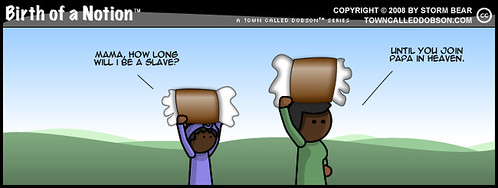 click to enlarge In 1654, John Casor, a black man, become the first legally-recognized slave in the area to become the United States. A court in Northampton County ruled against Casor, declaring him property for life, "owned" by the black colonist mentioned before: Anthony Johnson. Since persons with African origins were not English citizens by birth, they were not necessarily covered by English Common Law. The Virginia Slave codes of 1705 made clear the status of slaves. During the British colonial period, every colony had slavery. Those in the north were primarily house servants. Early on, slaves in the South worked on farms and plantations growing indigo, rice, and tobacco; cotton became a major crop after the 1790s. In South Carolina in 1720 about 65% of the population consisted of slaves. Slaves were used by rich farmers and plantation owners with commercial export operations. Backwoods subsistence farmers seldom owned slaves. Some of the British colonies attempted to abolish the international slave trade, fearing that the importation of new Africans would be disruptive. Virginia bills to that effect were vetoed by the British Privy Council; Rhode Island forbade the import of slaves in 1774. All of the states except Georgia had banned or limited the African slave trade by 1786; Georgia did so in 1798 - although some of these laws were later repealed. The West Africa Squadron was assisted by forces from the United States Navy, starting in 1820 with the USS Cyane. Initially this consisted of a few ships, but was eventually formalized by the Webster-Ashburton Treaty of 1842 into the Africa Squadron. A TCD reader suggested this documentary on Black History titled A Great and Mighty Walk. View Documentary Here Disclaimer:
BIRTH OF A NOTION WALLPAPER is now available for your computer. Click here. |
Thursday, April 10, 2008
Black History: Transition from Servitude
Subscribe to:
Post Comments (Atom)








0 comments:
Post a Comment